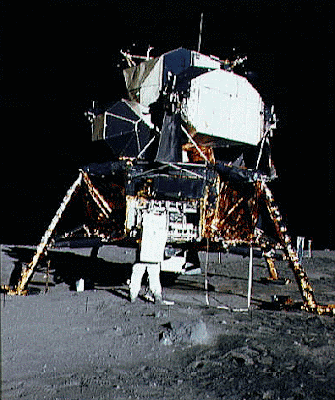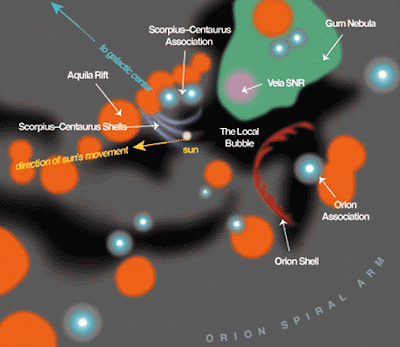Adventures Beyond the Plausible Midfuture
What exactly is the 'plausible midfuture,' a term I have used here from early days without ever quite defining it?
It lies beyond the near future of technologies already on the drawing board, though some of today's tech may remain in use, just as some DC-3s are still flying. I think of the midfuture as beginning perhaps around midcentury, give or take a couple of decades. The world should still be largely familiar. Streetscapes of today do not differ obviously from those of the 1970s (at least in the US; China is a different matter). Car styles and clothing styles have changed, but the first 'new' thing a time traveller might notice are those people using cellphones and talking about stuff they found on the Internet.
The far end of the midfuture, when it shades into the far future, is naturally hazier, perhaps 200 years, give or take a couple of generations. A few DC-3s may still be flying, but by then only as exercises in historic preservation, and with multiple rebuildings like the Ship of Theseus. Travellers from 2010 would at once sense that they were in a different era. But much should still be recognizable, as our military institutions and uniforms have continuity with those of 1810 (but only in traces with those of 1610).
If there is anything like a Singularity, of course, all bets are off, which brings us to the 'plausible' half of my formulation. Prediction is difficult, said Yogi Berra, especially about the future. In the popular culture the future is passé; thus Disney relaunched Tomorrowland as a retro-future.
What rates as Plausible [TM] space tech, so far as human travel and habitation are concerned, has not changed much in the half century of space travel. The tech revolution of the recent and current era, cybernetics, has profoundly transformed robotic space travel - no one in the 1950s expected robotic Mars rovers, or Titan landings controlled from Pasadena. The anticipated hardware has not much changed (apart from the rather iffy prospects of elevators) just as cars and jetliners have changed less than anyone in the 50s expected.
And beyond the midfuture? Will technical progress, taken in all, continue at more or less the rate of the last 200 years? Or will it settle down into maturity and gradual refinement, as guns and sailing ships did from the 16th century until the 19th? But the far future is a long time. A few posts back I considered the era of 40,000 years from now, still a dip of the toe in the sea of far futurity.
What we want in our hearts - at least for purposes of Romance - is space opera: FTL starships, worlds by the dozen, the Galactic Empire or at least the Terran Empire. None of this is very plausible, which is a long ways from saying impossible. General Relativity is far above my math and physics pay grade. But to judge from discussion here, including commenters for whom it is not above their pay grade, GR does not actually rule out FTL. It merely imposes constraints, which can be largely tucked into the deep background mechanics, invisible to the story.
An alternative option is simply not to worry about Albert Einstein (an early scholar who followed Newton in refining Aristotle's speculations). Most fantasy writers do not belabor the pseudo-physics of dragons or magic, and are no worse off for it, and space opera is fundamentally 'science fantasy,' whether or not anyone uses a vorpal sword. The geek police never arrested Asimov or Bujold, and they have no greater authority over you.
That said, if you are regular reader of this blog you probably like and appreciate the trappings of hard SF, the crisp glitter of a Realistic [TM] spaceship against the velvet vastness of space. This too is justified. Again our sister genre, fantasy, points the way. Even though a fantasy world has magic, we still expect its swords to be sharp and its sailing ships to have a practical, seamanlike rig. (Not in all fantasy worlds, especially the dreamlike ones, but more often than not.)
So the leap into space opera does not compel us to abandon every standard and uncritically embrace our inner Hollywood. We are free to embrace it critically. What remains is the obligation to be consistent with our vision. (If you want real, Heinleinian torch drives, don't rate them in gigawatts.) Or, if you want the equivalent of gas turbine ships fighting with smoothbore cannon, gin up a background history that justifies it. The Old Race invented the drive, but they were peaceful, which is why they got wiped out, yada yada.
For that matter, truth to be told, if the story is good enough no one will really care.
Related posts: I recently discussed adventures in the plausible midfuture, and back in early days I looked at some retro-futures.
The image is swiped from a blog aptly named The Speculist.










